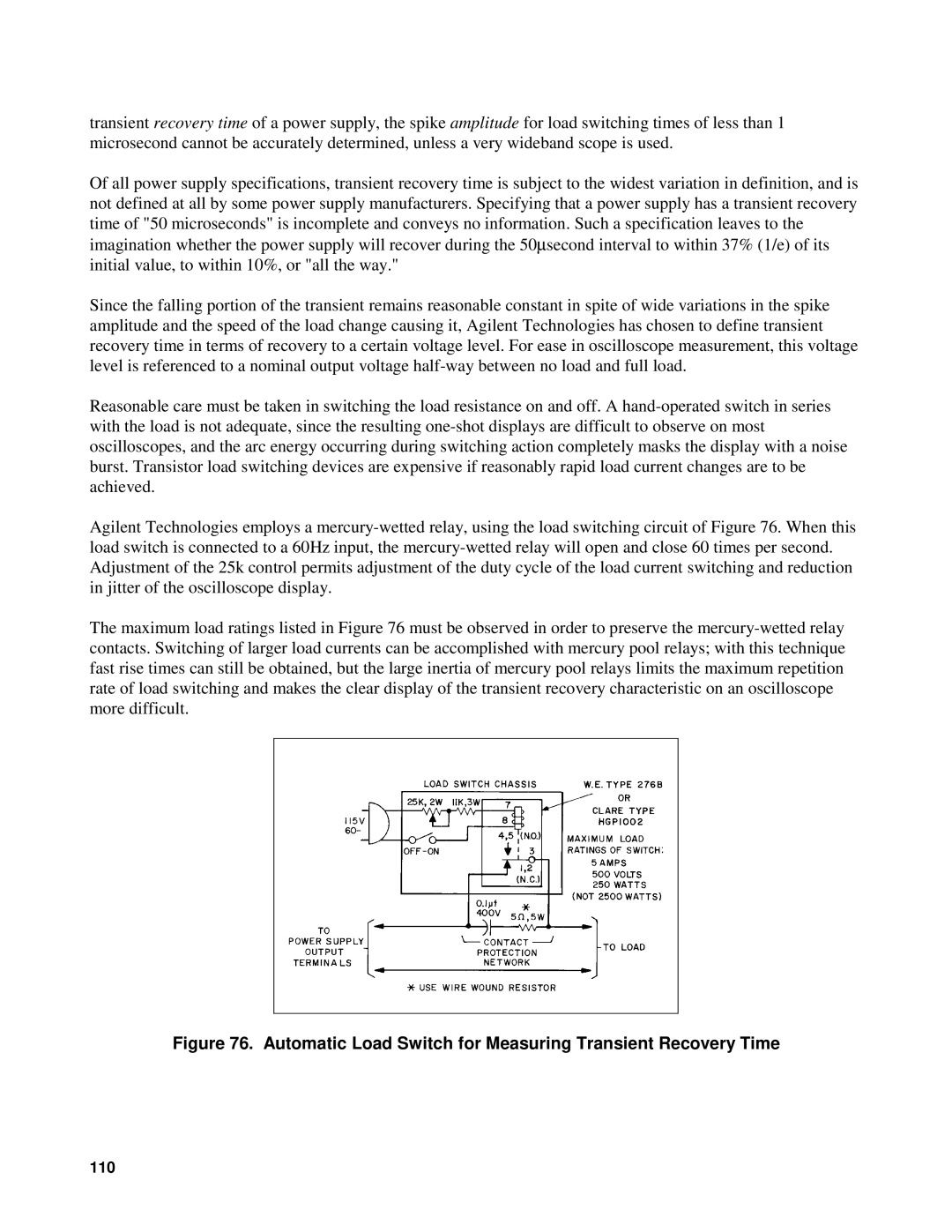
transient recovery time of a power supply, the spike amplitude for load switching times of less than 1 microsecond cannot be accurately determined, unless a very wideband scope is used.
Of all power supply specifications, transient recovery time is subject to the widest variation in definition, and is not defined at all by some power supply manufacturers. Specifying that a power supply has a transient recovery time of "50 microseconds" is incomplete and conveys no information. Such a specification leaves to the imagination whether the power supply will recover during the 50∝ second interval to within 37% (1/e) of its initial value, to within 10%, or "all the way."
Since the falling portion of the transient remains reasonable constant in spite of wide variations in the spike amplitude and the speed of the load change causing it, Agilent Technologies has chosen to define transient recovery time in terms of recovery to a certain voltage level. For ease in oscilloscope measurement, this voltage level is referenced to a nominal output voltage
Reasonable care must be taken in switching the load resistance on and off. A
Agilent Technologies employs a
The maximum load ratings listed in Figure 76 must be observed in order to preserve the
Figure 76. Automatic Load Switch for Measuring Transient Recovery Time
110
